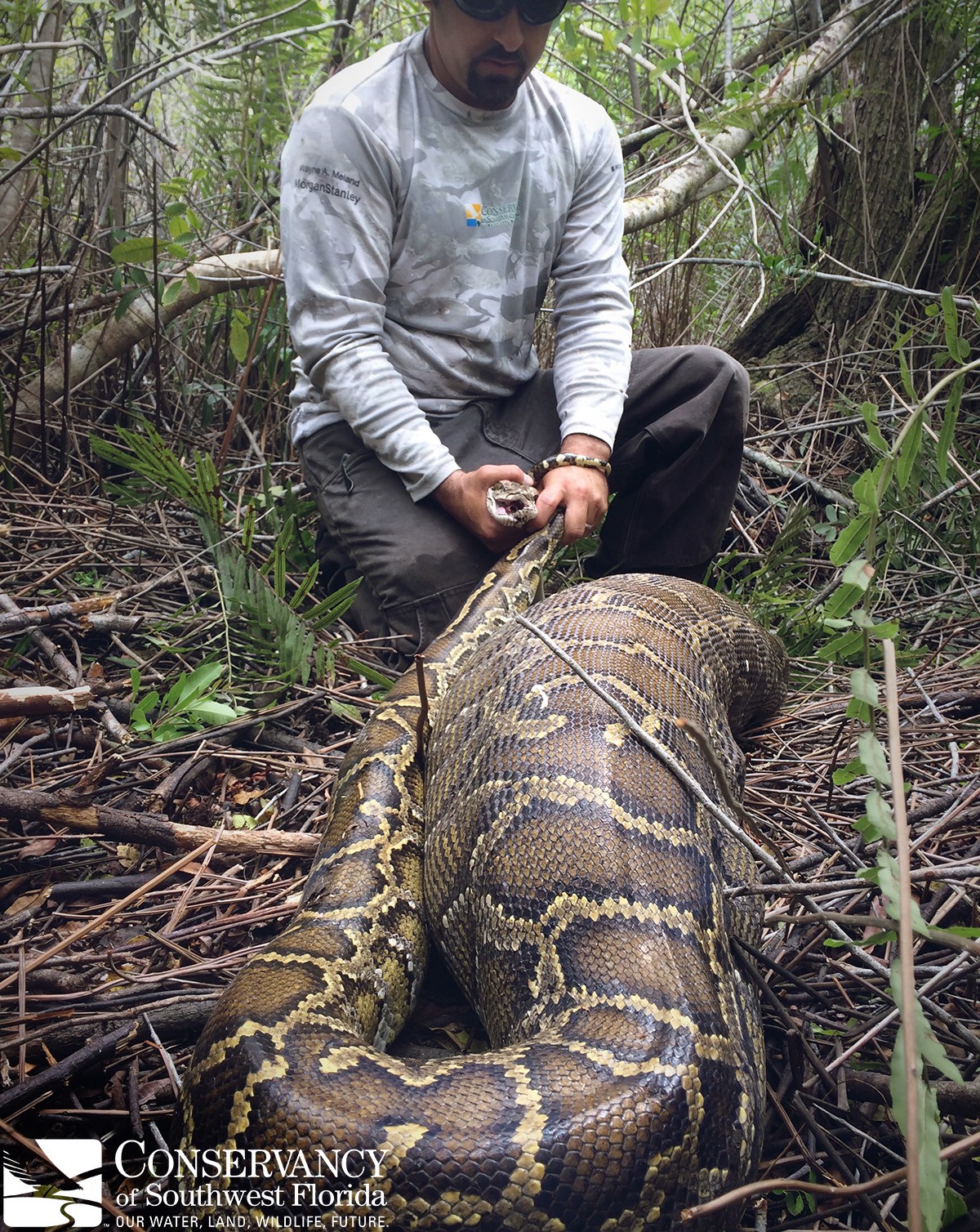
Image: Conservancy of Southwest Florida
[Editor’s note: This report contains graphic images.]
Experts at the Conservancy of Southwest Florida will soon be publishing an interesting study — one which includes its documentation of a 14.29-kilogram Burmese python swallowing a heavier 15.88-kilogram young white-tailed deer.
According to a statement issued by the organization, the discovery of the python was made in April 7, 2015 at the Collier-Seminole State Park. The python appeared “distended by a large food bulge.” Wildlife biologists captured the animal for study. Later in captivity, the 11-foot female python became stressed and regurgitated its large meal.
Image: Conservancy of Southwest Florida
Experts believed the incident to be the largest predator-to-prey ratio ever documented for Burmese pythons, and possibly pythons in general. Additional observations and findings regarding the case will be published in the March 2018 issue of the journal Herpetological Review.
Image: Conservancy of Southwest Florida
Burmese pythons are snakes native to tropical South and Southeast Asia. They may have entered the United States through the pet trade and were either set loose or escaped from their owners. The pythons are considered an invasive species in southwest Florida where these snakes have negatively affected the area’s native wildlife.
Some studies suggest the pythons were 90 percent responsible for the decline of small animals in the eastern Everglades. Discovering the deer in the python’s stomach raised concerns that the snakes could even affect deer population by praying on the young.
Efforts are currently underway to reduce python population by removing female breeding pythons to disrupt the egg-laying cycle and prevent new pythons from being born. JB
RELATED STORIES:
Last male northern white rhino takes a walk despite illness
Mexican troops partner with activists to save vaquita porpoise
Malaysia elephant sanctuary trumpets effort to cut human-animal conflict